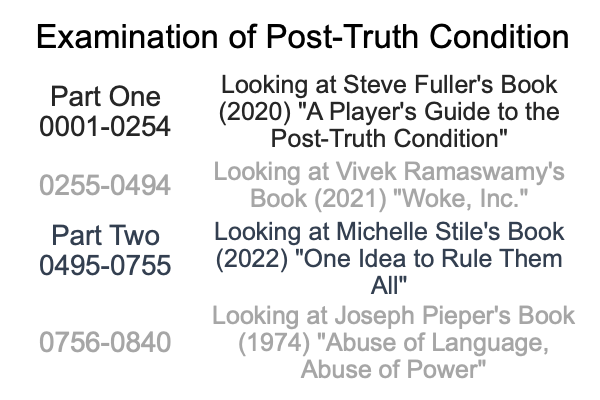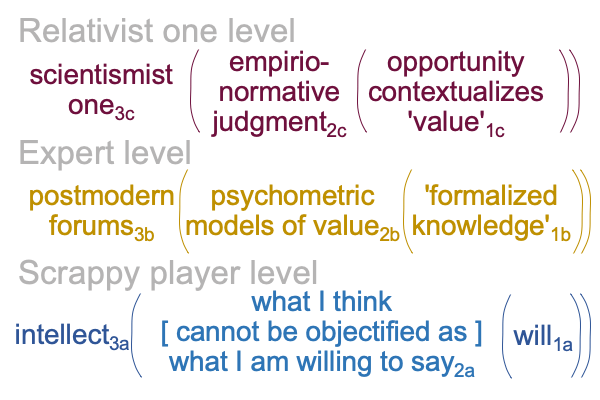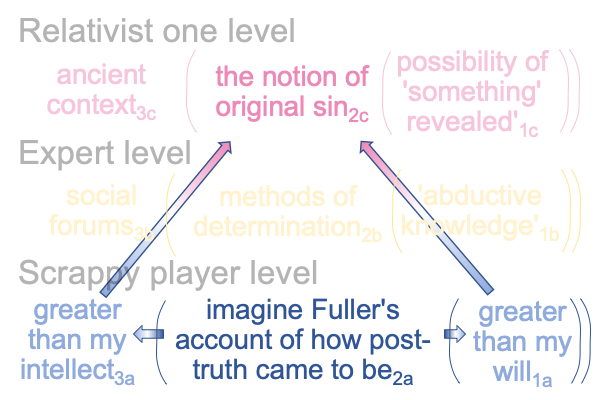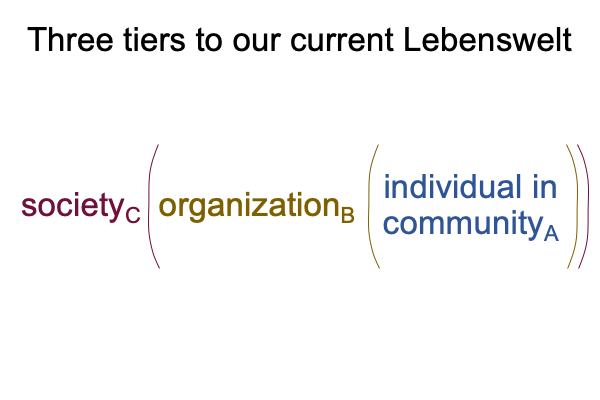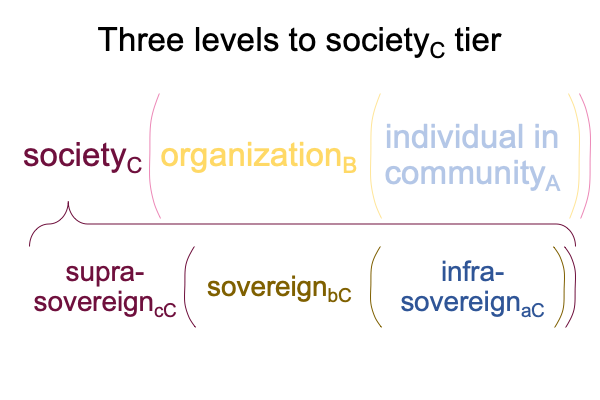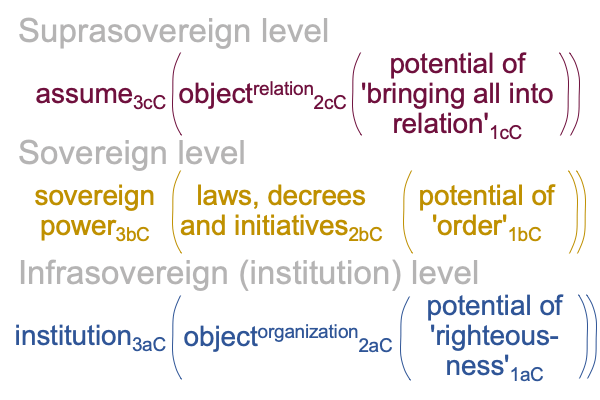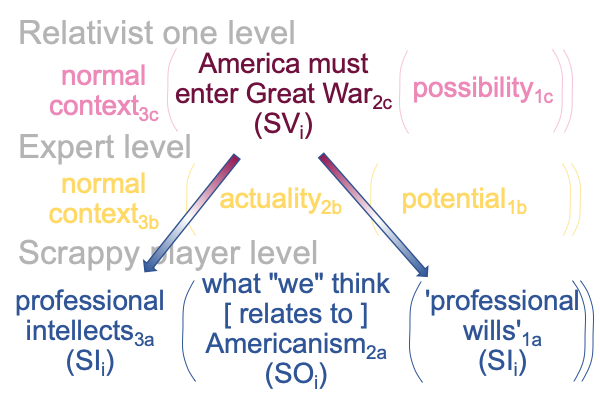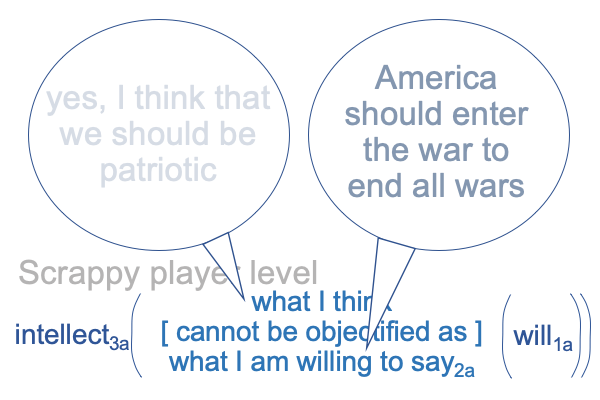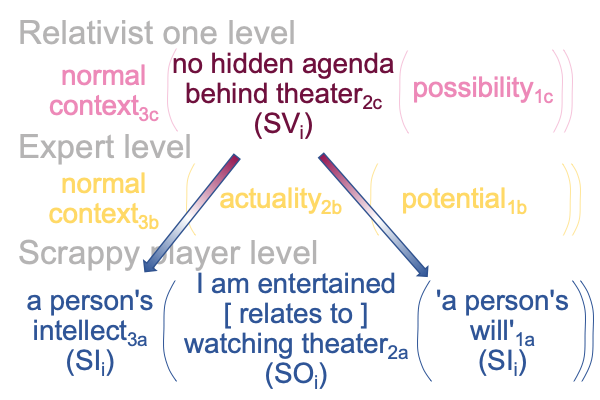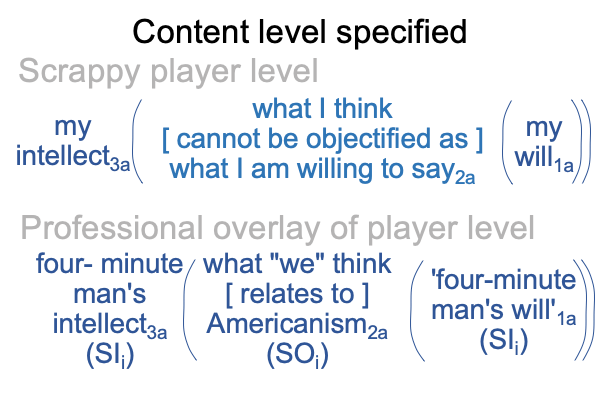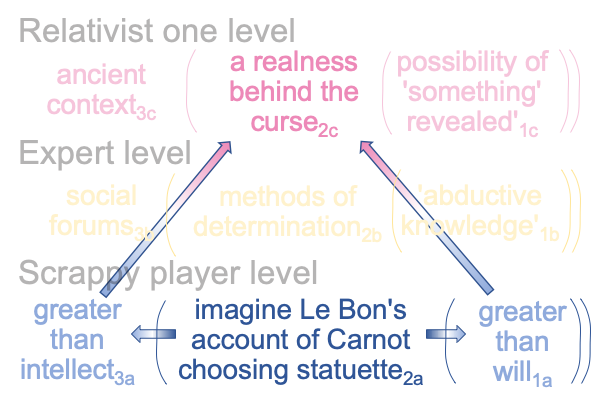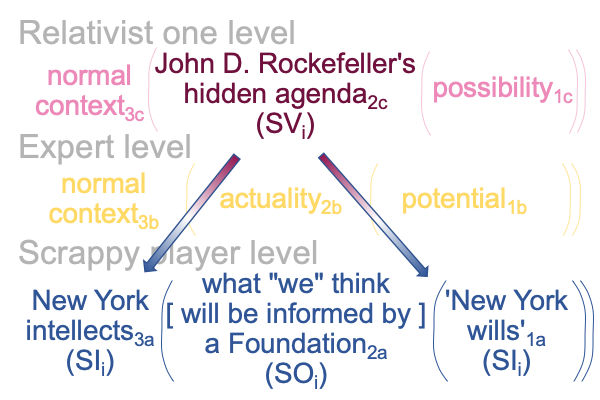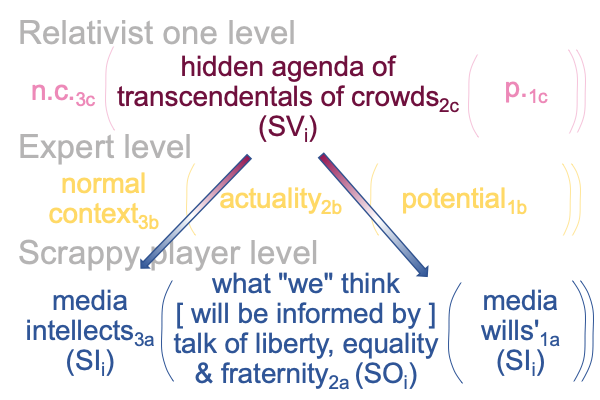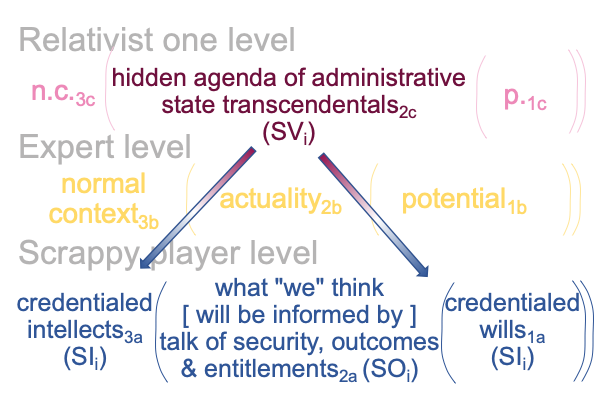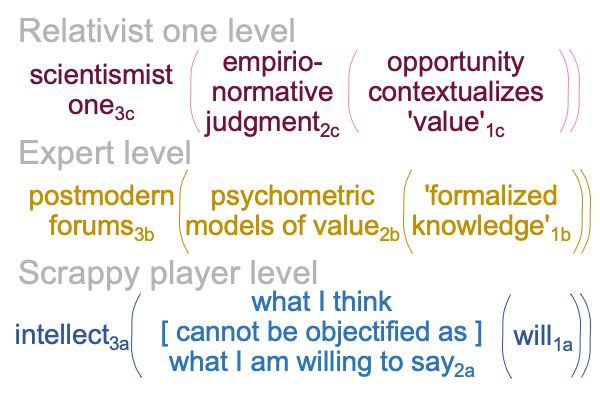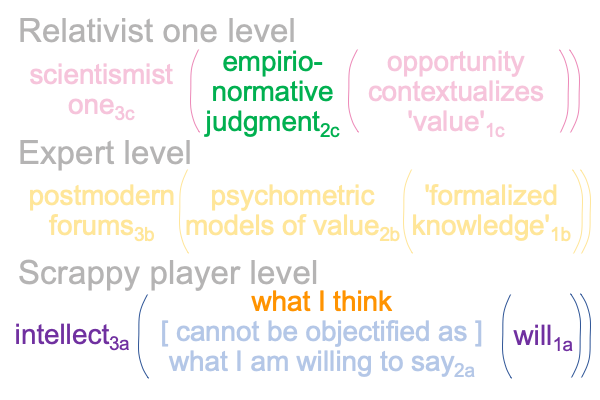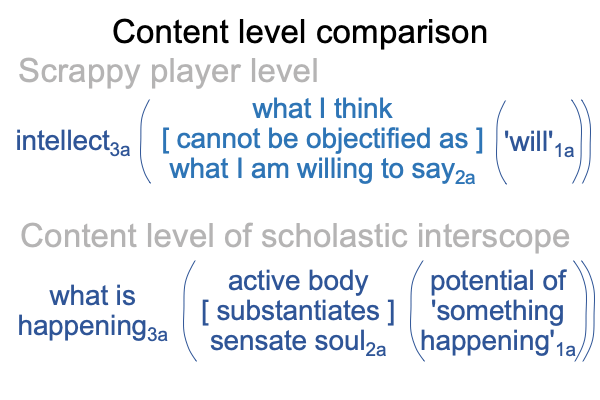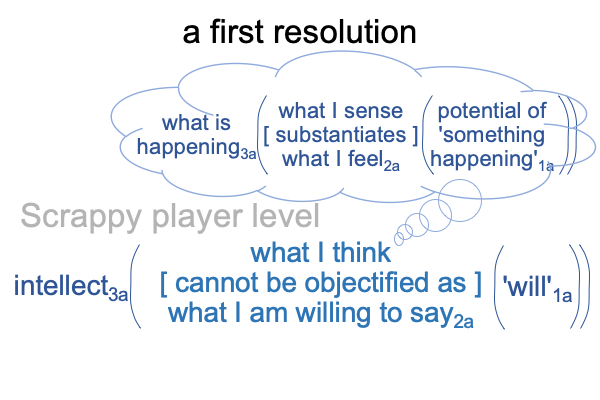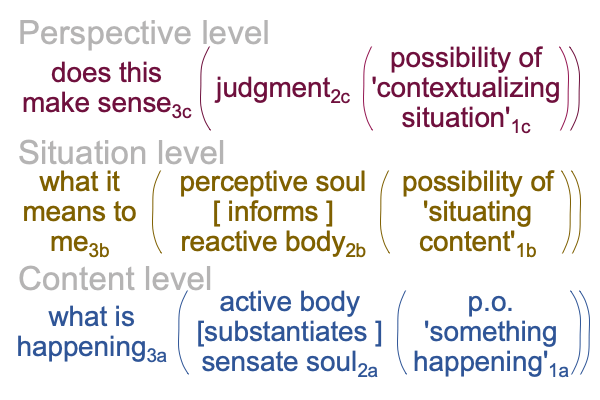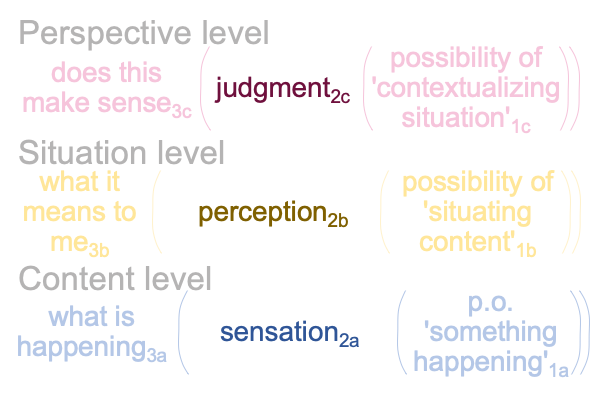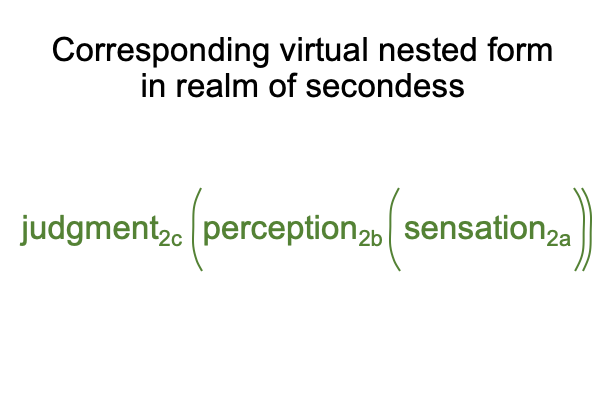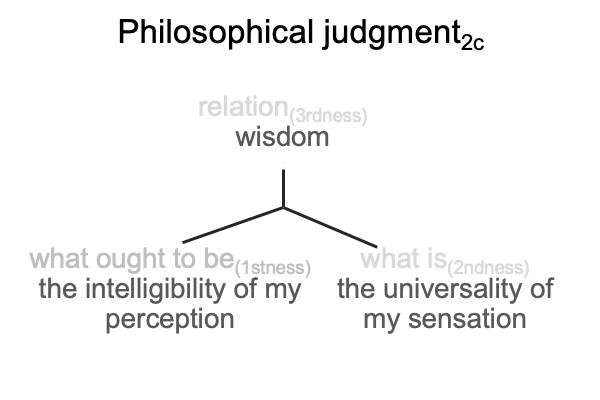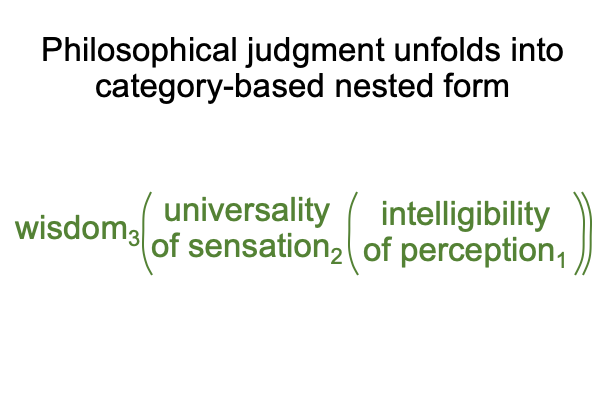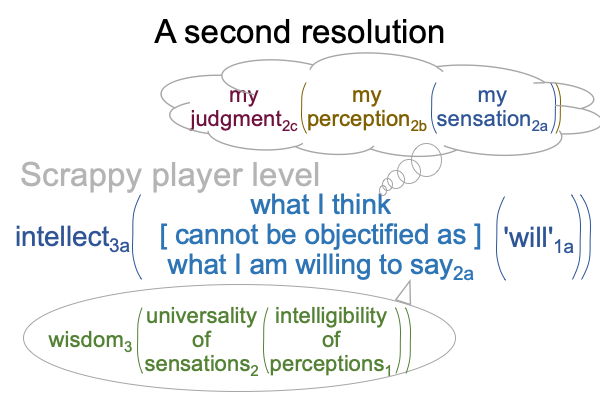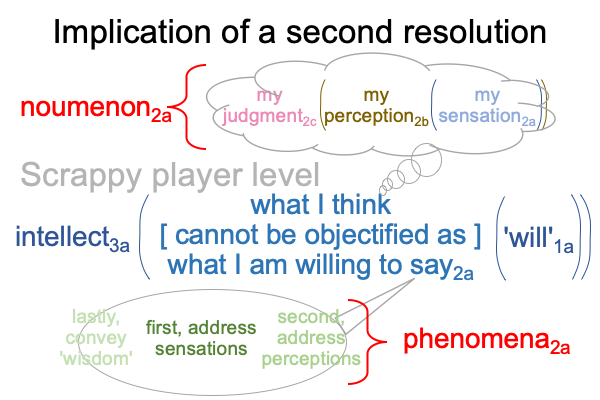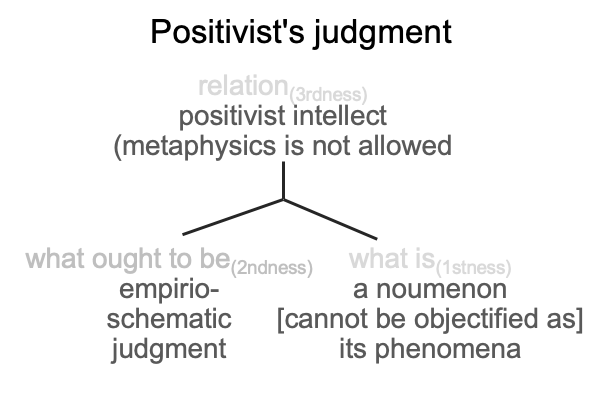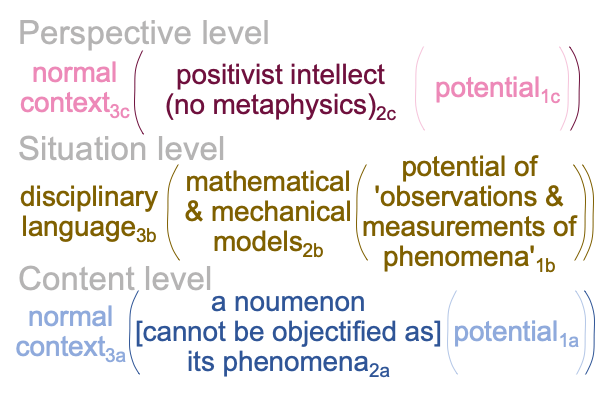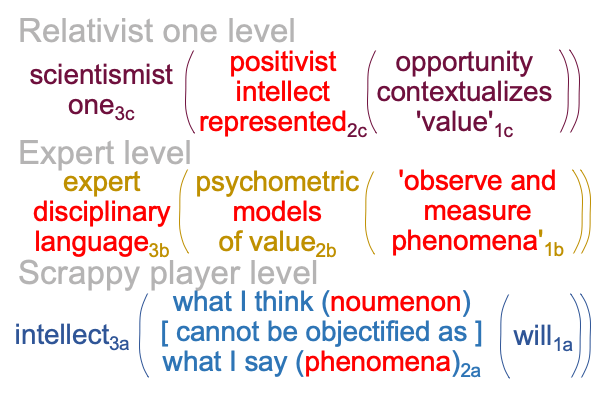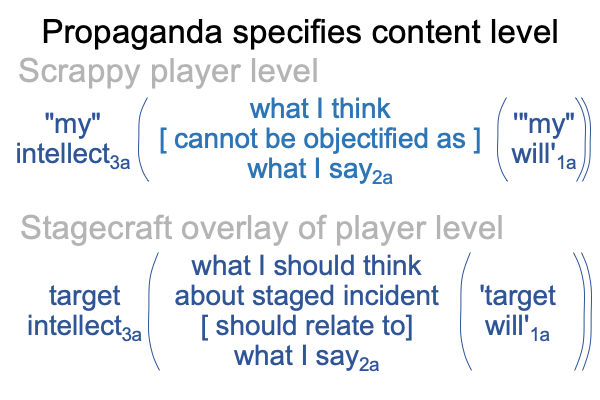Looking at N. J. Enfield’s Book (2022) “Language vs. Reality” (Part 23 of 23)
1060 Chapter eleven completes Part III. This chapter concerns sense making.
How am I to make sense of the inverted interscope that arrives after the story of Adam and Eve enters into Enfield’s science-inspired interscope?
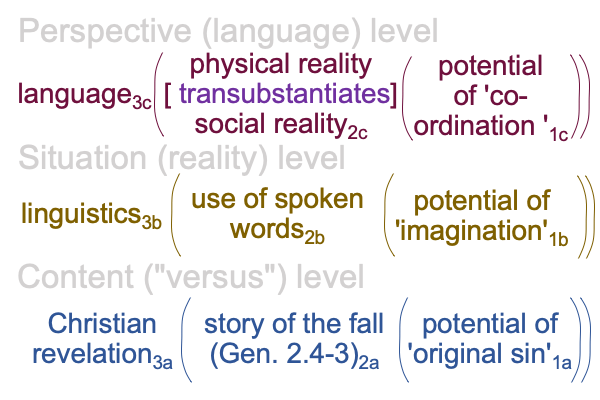
1061 How do I capture the Gestalt shift in speech-alone talk?
For Enfield’s scientific frame, the perspective-level contiguity is [translates into].
For the inverted frame, the perspective-level contiguity is [transubstantiates into].
Does this suffice?
The Gestalt switches from one to the other interscope.
1062 What else?
The change of Gestalts reconfigures the title.
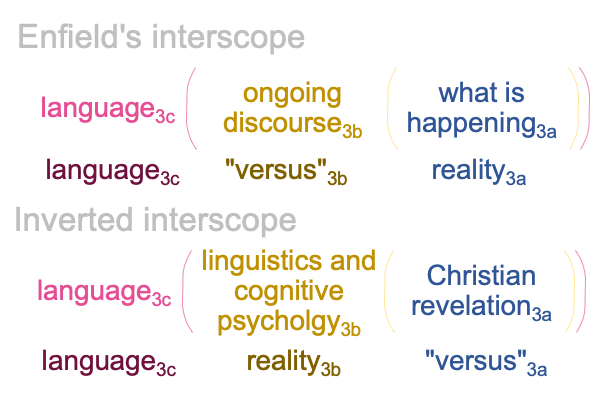
1063 What Enfield cannot say is this.
Our current Lebenswelt is not the same as the Lebenswelt that we evolved in.
In 2022, he simply is not aware of the hypothesis of the first singularity.
1064 What Enfield cannot say may be formulated in terms of science, as an evolutionarily recent cultural transition from hand-speech talk to speech-alone talk, starting with the emergence of the Ubaid culture of southern Mesopotamia, nominally 7824 years ago.
One day, science may present how hand and hand-speech talk potentiates constrained social complexity and speech-alone talk potentiates unconstrained social complexity.
Science may investigate how hand and hand-speech talk facilitates implicit abstraction and how speech-alone talk has a unique ability to label anything, even referents that cannot be pictured or pointed to, even referents that are quite fantastic and alluring and that exist only in the realm of possibility.
1065 Perhaps, explicit abstraction is more cunning than any animal that the Lord God creates.
Like sin, it couches at our door. It is our job to tame it.
1066 In conclusion, Enfield’s well-written book testifies to what he is not aware of.
The background Gestalt of his scientific discourse is a story, and this story steps forward in this examination of Part III, entitled “Reality Made By Language”. But, the inversion does not manifest a full Gestalt shift, because that is precisely what Enfield wants to avoid. He wants to remain a scientist, speaking the disciplinary languages of linguistics and cognitive psychology, as if they could warn us about the near impossibility of practicing Wittgenstein’s rule, because our kind evolves the trait of ‘agreeability’1a, so that our ‘imaginations’1b may align in the virtual normal context of ‘coordination’1c.
1067 Enfield’s interscope is beautiful to behold.
His interscope appears in the mirror of science. I say this while casting a glance at Comments on Mariusz Tabaczek’s Arc of Inquiry (2019-2024) by Razie Mah, available at smashwords and other e-book venues. Portions appear in Razie Mah’s blogs for April through June, 2024. When a theologian looks at Enfield’s interscope, shimmering in the mirror of science, he responds with a theological question, asking, “What is this image revealing?”
The answer cries out for a Gestalt inversion.
One Gestalt hinges on the contiguity, “translates”.
The other Gestalt hinges on the contiguity, “transubstantiates”.
1068 The invert interscope is a wonder to behold.
Saint Thomas Aquinas might chuckle. Aquinas coined the word, “transubstantiates”.
Note how a physical reality, as simple as water, poured over the head of a baby or a child or a repenting adult,transubstantiates into the social reality of washing away the stain of original sin2c. Water is more than physical reality. Washing the stain of original sin is more than social reality.
1069 This is what the theologian projects into the mirror of theology, standing in the jurisdiction of science, as he contemplates the implications of what Enfield has written.
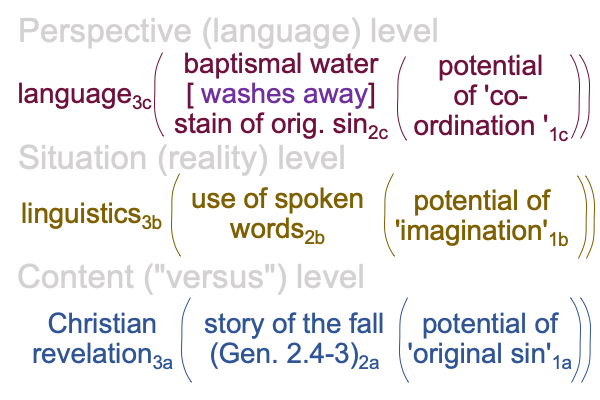
1070 In the sacrament of baptism, everyone in the ritual co-ordinates, in one particular recitation, starting with an answer to the question, “Do you reject Satan?”
Lucifer is an angel of light. Everything that Lucifer says tells more about Lucifer than the referent that Lucifer’s words conjure. Indeed, the referent that Lucifer’s words conjure is a lie. Just look at the seven of cups in a deck of illustrated Tarot cards and tell me that Lucifer’s words do not conjure this image in the mind of poor, unsuspecting Eve, who, after all, is only trying to be agreeable.
1071 Perhaps, this examination is an invitation for Dr. Enfield and other linguists and cognitive psychologists, to realize that their science has isolated us in rigid containers of empirio-schematic thought. We are creatures who evolved to live as images of God, not as subjects for the psychometric sciences.
Do not let your scientific commitments get in the way of an origin story of the ancient Near East2a, rising through the observable and measurable use of spoken words2b, and blossoming into a sacrament instituted during the most amazing revelation coming from the promised land2c.
When John the Baptist pours the waters of the Jordan over the head of Jesus, the heavens rejoice.
Here is what we evolved to be, standing at the confluence of language and reality.
1072 John Deely, the author of Four Ages of Understanding (2001), offers a label for this new world view. Welcome to the Age of Triadic Relations.
1073 My thanks to Dr. N. J. Enfield for his book, written at the cusp (yet without awareness that there is a cusp) of a new age of understanding.

